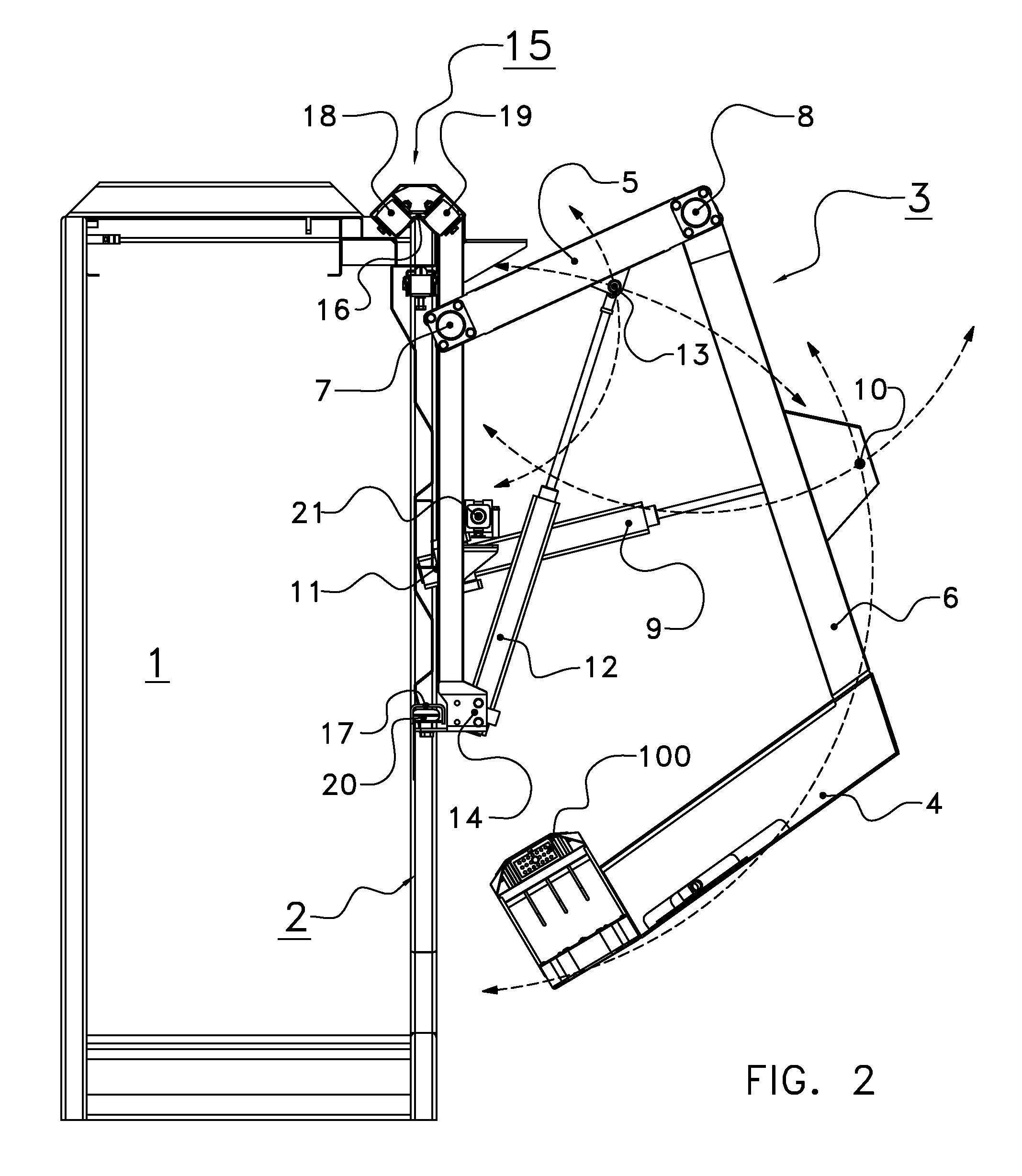Method of controlling a milking implement, a software program for and an implement performing the method
a technology of automatic milking and implements, applied in the field of automatic milking implements, can solve the problems of damage to the relevant teat cup, contamination of the teat cup, and the already obtained milk, and achieve the effects of compact and efficient, long life, and quick generation of spatial images
- Summary
- Abstract
- Description
- Claims
- Application Information
AI Technical Summary
Benefits of technology
Problems solved by technology
Method used
Image
Examples
Embodiment Construction
[0053]The following is a description of certain embodiments of the invention, given by way of example only and with reference to the drawings. The implement for automatically milking an animal, such as a cow, shown in a diagrammatic perspective view in FIG. 1, comprises a milking parlour 1 that accommodates one single animal, such as a cow. This milking parlour 1 is surrounded in a customary manner by a fencing 2 and is provided with an entrance door and an exit door which are, incidentally, not shown in the figures. In the milking parlour 1 and in the immediate vicinity thereof there is a milking robot comprising a robot arm construction 3 for automatically attaching a teat cup to a teat of an animal to be milked. The robot arm construction is provided with a robot arm 4 for carrying a teat cup, which robot arm 4 is pivotable to under the udder of the animal (see FIG. 3).
[0054]The robot arm construction 3 is provided with a first robot arm construction portion 5 and a second robot ...
PUM
 Login to View More
Login to View More Abstract
Description
Claims
Application Information
 Login to View More
Login to View More - R&D
- Intellectual Property
- Life Sciences
- Materials
- Tech Scout
- Unparalleled Data Quality
- Higher Quality Content
- 60% Fewer Hallucinations
Browse by: Latest US Patents, China's latest patents, Technical Efficacy Thesaurus, Application Domain, Technology Topic, Popular Technical Reports.
© 2025 PatSnap. All rights reserved.Legal|Privacy policy|Modern Slavery Act Transparency Statement|Sitemap|About US| Contact US: help@patsnap.com



